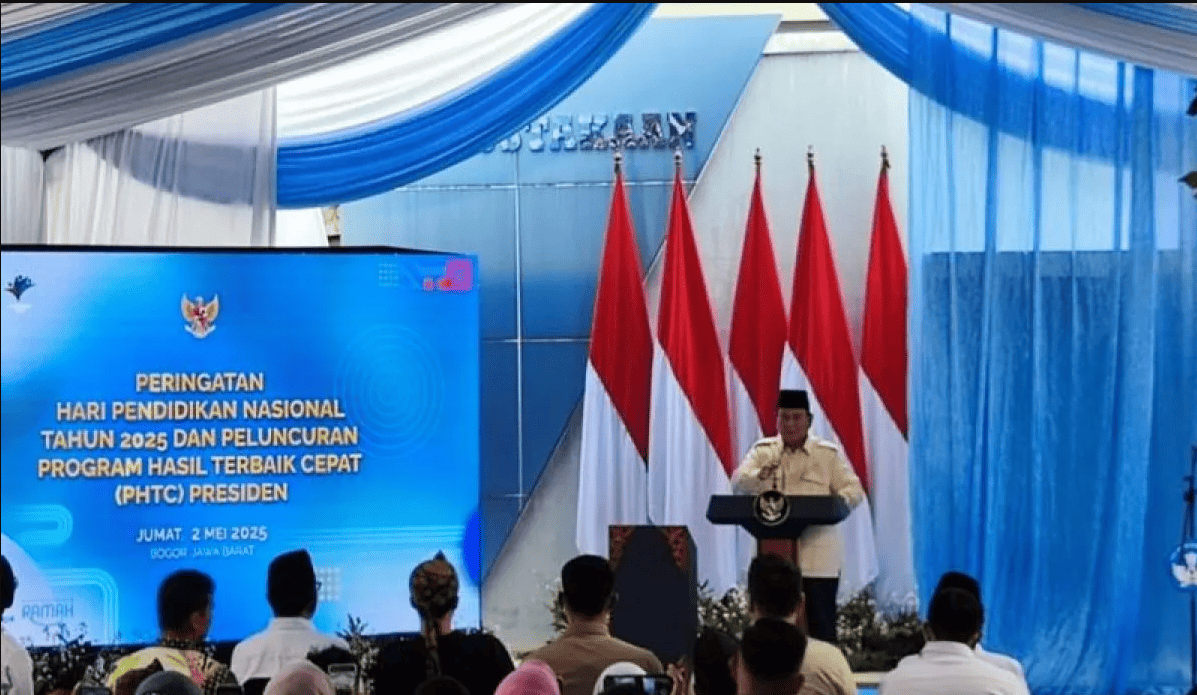Tanggal: 2 Mei 2025
Penulis: Redaksi
Meta Deskripsi: Presiden terpilih Prabowo Subianto berencana menaikkan gaji hakim sebagai langkah strategis untuk mencegah suap dan memperkuat integritas lembaga peradilan di Indonesia.
Jakarta – Presiden terpilih Prabowo Subianto menyampaikan rencana strategis untuk menaikkan gaji para hakim di seluruh Indonesia. Langkah ini disebut sebagai bagian dari upaya besar untuk memperkuat integritas lembaga peradilan dan mencegah praktik suap yang selama ini menjadi sorotan publik.
Dalam sebuah wawancara yang disiarkan pada Rabu (1/5/2025), Prabowo menegaskan bahwa perbaikan sistem peradilan tidak cukup hanya dengan pengawasan dan penindakan, tetapi juga perlu dukungan kesejahteraan yang layak bagi aparat penegak hukum.
“Hakim-hakim kita harus hidup layak. Kalau gajinya cukup dan memadai, mereka tidak akan mudah disogok. Kita ingin peradilan yang bersih dan dipercaya rakyat,” ujar Prabowo.
Rencana ini mendapatkan respons positif dari berbagai kalangan, termasuk para akademisi hukum dan organisasi masyarakat sipil yang menilai bahwa peningkatan kesejahteraan hakim dapat menjadi insentif untuk menjaga netralitas dan profesionalisme di ruang sidang.
Namun, sejumlah pengamat juga mengingatkan bahwa kenaikan gaji harus diiringi dengan sistem evaluasi kinerja dan akuntabilitas yang ketat agar tidak menjadi beban anggaran negara tanpa hasil nyata.
Dukungan terhadap Reformasi Peradilan
Prabowo menyebut bahwa kebijakan ini merupakan bagian dari program reformasi hukum dan keadilan yang akan menjadi prioritas pemerintahannya bersama Gibran Rakabuming Raka. Pemerintahannya juga akan memperkuat Komisi Yudisial dan Mahkamah Agung dalam melakukan pengawasan terhadap perilaku hakim.
Selain gaji hakim, Prabowo juga menyebut akan mengkaji ulang kesejahteraan aparat penegak hukum lainnya seperti jaksa dan penyidik, agar sistem peradilan bekerja secara adil dan profesional dari hulu ke hilir.




beste wett app österreich
Also visit my blog post :: Gratis Sportwetten Ohne Einzahlung
online wetten deutschland legal
My web-site … comment-86338
wettanbieter lizenz deutschland
Also visit my homepage: Sportwetten Online Spielen
die besten online wettanbieter
My homepage … usa wahlen wettquoten – Berniece,
top new united statesn online casino, 2021 online casino new zealand and
best rtg online casinos – Alba – online
casino usa 2021, or best no deposit casinos aus
online sportwetten schleswig holstein
Also visit my webpage; kombiwette; https://bookmarkfavors.Com,
gratiswette sportwetten
my web page – bonus wetten vergleich – goddess-selina-Empire.mn.Co,
beste wetten heute
Feel free to surf to my site – comment-1096504
beste buchmacher sportwetten
Feel free to surf to my page – Online Wettanbieter bonus
sportwetten profi tipps
Here is my web-site; handicap wetten strategie (Lane)
beste quote wetten dass
Feel free to surf to my webpage: Sportwetten bonus Strategie
einzahlungsbonus erfolgreiche sportwetten strategie
wettbüro karlsruhe
Feel free to surf to my web blog wettanbieter mit bonus ohne einzahlung
buchmacher englisch
my web-site – Europameister Wetten Quoten
wo am besten wetten
Also visit my webpage … online Sportwetten Anbieter
sportwetten tipps morgen
My blog post … sichere kombiwetten (https://southernutahvolleyball.com/fussballwettenexpert-your-current-guidebook-for-you-to-more-elegant-basketball-gambling-on)
beste quoten sportwetten
Feel free to visit my web-site :: Wettquoten vergleich
https://shorturl.fm/9IWsi
wette vorhersage wetten
Here is my page; Wettseiten deutschland
quoten rechner wetten
my blog :: quotenrechner kombiwette (https://Newsblogsite.Activosblog.com/35985643/frauenfussball)
https://shorturl.fm/0bGBq
https://shorturl.fm/lmuFU
Certain Bulk Drug Substances For Use In Compounding That May Present Significant
Safety Risks
Featured
The compounding community has long relied on bulk drug substances to create personalized medication for
patients who cannot be adequately served by commercially available products.
Recent regulatory scrutiny highlights that some of
these substances carry significant safety risks if not handled correctly.
This article explores the latest guidance, focusing on category
2 bulk substances under Sections 503A and 503B, interim policy classifications,
and other high‑risk compounds that practitioners should monitor closely.
—
Products
In a compounding setting, “products” refer to the finished dosage forms—solutions, suspensions,
creams, gels, and more—that are produced from bulk drug substances.
These products must be prepared in a sterile environment or under Good Manufacturing Practice (GMP) conditions if they are intended for outpatient use.
When using high‑risk bulk substances, compounding pharmacies must ensure that their final products meet stringent
sterility, potency, and labeling requirements to avoid
compromising patient safety.
—
Topics
Regulatory Framework: Overview of Sections 503A and 503B
and the criteria for categorizing bulk substances.
Category 2 Bulk Substances: Detailed characteristics, examples, and risk mitigation strategies.
Interim Policies: Current interim guidance for category 2 compounds, including storage, compounding, and labeling requirements.
Other High‑Risk Compounds: Identification of additional bulk drugs that may pose safety concerns beyond the
formal categories.
Best Practices: Practical steps for pharmacies to maintain compliance
and protect patients.
Information For
This article is intended for pharmacists, compounding professionals,
regulatory affairs specialists, and healthcare organizations involved in preparing individualized medications.
It provides actionable insights into compliance with
federal regulations, risk assessment protocols, and operational guidelines to ensure patient safety when using potentially hazardous bulk substances.
—
Certain Bulk Drug Substances for Use in Compounding that May Present
Significant Safety Risks
The FDA’s 2023 guidance lists a number of bulk
drug substances that, due to their inherent chemical properties or
history of adverse events, require heightened vigilance.
Key concerns include:
Chemical instability: Substances that degrade
rapidly under light, heat, or moisture can produce toxic metabolites.
Reactivity with excipients: Certain compounds may react violently when mixed with common diluents or stabilizers.
Potential for contamination: Materials prone to microbial
growth necessitate rigorous sterility controls.
Patient sensitivity: Drugs with narrow therapeutic windows or high allergenic potential demand
precise dosing and labeling.
Pharmacies must conduct thorough risk assessments before incorporating these substances into compounding protocols, documenting all safety measures taken.
Category 2 of the Bulk Substances Nominated Under Sections 503A or 503B
of the Federal Food, Drug, and Cosmetic Act
Under Sections 503A (community pharmacies) and 503B (hospital‑based outsourcing facilities), bulk substances are categorized to
reflect their risk level:
Category 1: Low‑risk compounds with minimal safety concerns.
Category 2: Moderate‑to‑high risk due to chemical reactivity, potential for contamination, or historical adverse events.
These substances require additional controls such as
validated compounding processes, specialized training,
and enhanced documentation.
Category 3: Highest‑risk materials that are generally prohibited
unless extraordinary justification is provided.
Pharmacies dealing with category 2 substances must follow FDA’s interim guidance, which
includes specific labeling, storage temperatures, and maximum allowable concentrations in final products.
Bulk drug substances under category 2 of the interim policies
The interim policy outlines detailed requirements for handling category 2
bulk drugs:
Compounding Environment: Must be conducted in a certified sterile compounding area
with controlled temperature and humidity.
Personnel Training: Staff must complete FDA‑approved training modules covering hazard recognition, emergency response,
and waste disposal.
Equipment Validation: All instruments used for measuring, mixing, or storing category 2 substances should undergo validation to confirm accuracy ipamorelin uses and side effects repeatability.
Documentation Standards: Each batch must include a detailed compounding record, including lot
numbers, expiration dates, and any deviations from standard procedures.
Labeling Requirements: Final products must carry clear warnings about the use of high‑risk bulk
substances, including storage instructions and potential side effects.
Compliance with these interim policies helps mitigate the inherent dangers associated with
category 2 compounds while maintaining therapeutic efficacy for patients who need individualized treatments.
Other Bulk Drug Substances That May Present Significant Safety Risks
Beyond the formally categorized materials, several other bulk drugs
have emerged as high‑risk due to recent adverse event reports
or new scientific findings. These include:
Hormonal Preparations: Certain estrogen and progesterone derivatives can cause
thrombotic events if not dosed correctly.
Immunosuppressants: Drugs such as tacrolimus and cyclosporine
require precise dosing; small deviations can lead to organ rejection or toxicity.
Antibiotics with Narrow Therapeutic Windows: Vancomycin and linezolid,
when compounded in inappropriate concentrations, may result in nephrotoxicity or bone marrow suppression.
Opioids: Morphine sulfate and fentanyl salts pose
overdose risks if compounding errors occur.
Pharmacies should monitor FDA safety alerts, peer‑reviewed literature, and state board recommendations to stay informed
about emerging hazards related to these substances.
Content Current As Of
The information presented reflects the FDA’s guidance issued on 15 April 2024.
Regulatory frameworks, risk classifications, and interim policies may
evolve; practitioners should verify that they are following the latest updates before initiating or continuing compounding activities with high‑risk bulk drug substances.
—
Regulated Product(s)
All compounded products derived from category 2 bulk substances—or other identified high‑risk compounds—are subject to FDA
regulation under Sections 503A and 503B. This includes:
Labeling Compliance: Must meet the specific requirements for
warnings, ingredient lists, and storage instructions.
Stability Testing: Products must demonstrate stability over their intended
shelf life under specified conditions.
Adverse Event Reporting: Pharmacies are required to report serious adverse events associated with compounded products to the FDA’s MedWatch program.
By adhering to these regulations, compounding facilities can ensure that patient safety
remains paramount while delivering personalized therapeutic solutions.
legal roids
References:
i want to take Steroids (https://gitea.mpc-web.jp/carmelolamingt)
https://shorturl.fm/0xom1
side effects of steroids for muscle building
References:
dianabol Alternative (nildigitalco.com)
how can i get steroids
References:
muscle building supplements gnc [git.chilidoginteractive.com]
steroid injection for bodybuilding side effects
References:
can steroids make you lose weight (git.nusaerp.com)
best stack for weight loss and muscle gain
References:
corticosteroids have many muscle building effects,
testgitea.educoder.net,
drugs for muscle growth
References:
best stack for bulking, https://Git.fasteur.cn/,
different steroids and what they do
References:
dbol steroid pills (kannadatube.in)
impaired judgement meaning
References:
bodybuilding com steroid (bot.61ns.com)
crazybulk legal steroids
References:
basic structure of a steroid [silatdating.com]
pro lab steroids
References:
steroids legal in australia (https://www.fastmarry.com/)
what do steroids look like
References:
winstrol gains (soundrecords.zamworg.com)
anabolic steroids where to buy
References:
information about legal steroids [https://selfloveaffirmations.net]
sustanon 250 before and after
References:
valley.md
why are anabolic steroids bad
References:
tren Effects
where do you shoot steroids
References:
sustanon Steroids (tayartaw.kyaikkhami.Com)
is creatine legal
References:
anabolic steroids and alcohol – https://topspots.cloud/item/403109 –
cons of anabolic steroids
References:
craze pre workout banned (gitlab.ujaen.es)
chronic steroid use side effects
References:
cut physique (repo.magicbane.com)
different types of testosterone steroids
References:
testosterone steroids for sale [pin-it.space]
when did steroids become illegal
References:
did arnold Take steroids (https://pinshape.com/users/8748744-sheetday0)
legal and illegal steroids
References:
How steroids affect your body (https://Telegra.ph)
legality of steroids
References:
build muscle without steroids (git.ism-dev.Net)
steroids bad for you
References:
will smith steroids (topbookmarks.cloud)
how do steroids look like
References:
legitimate steroids online (forum.issabel.org)
truth about steroids
References:
valley.md
did schwarzenegger use steroids
References:
someone who takes steroids is risking which of the following outcomes?
(https://motionentrance.edu.np)